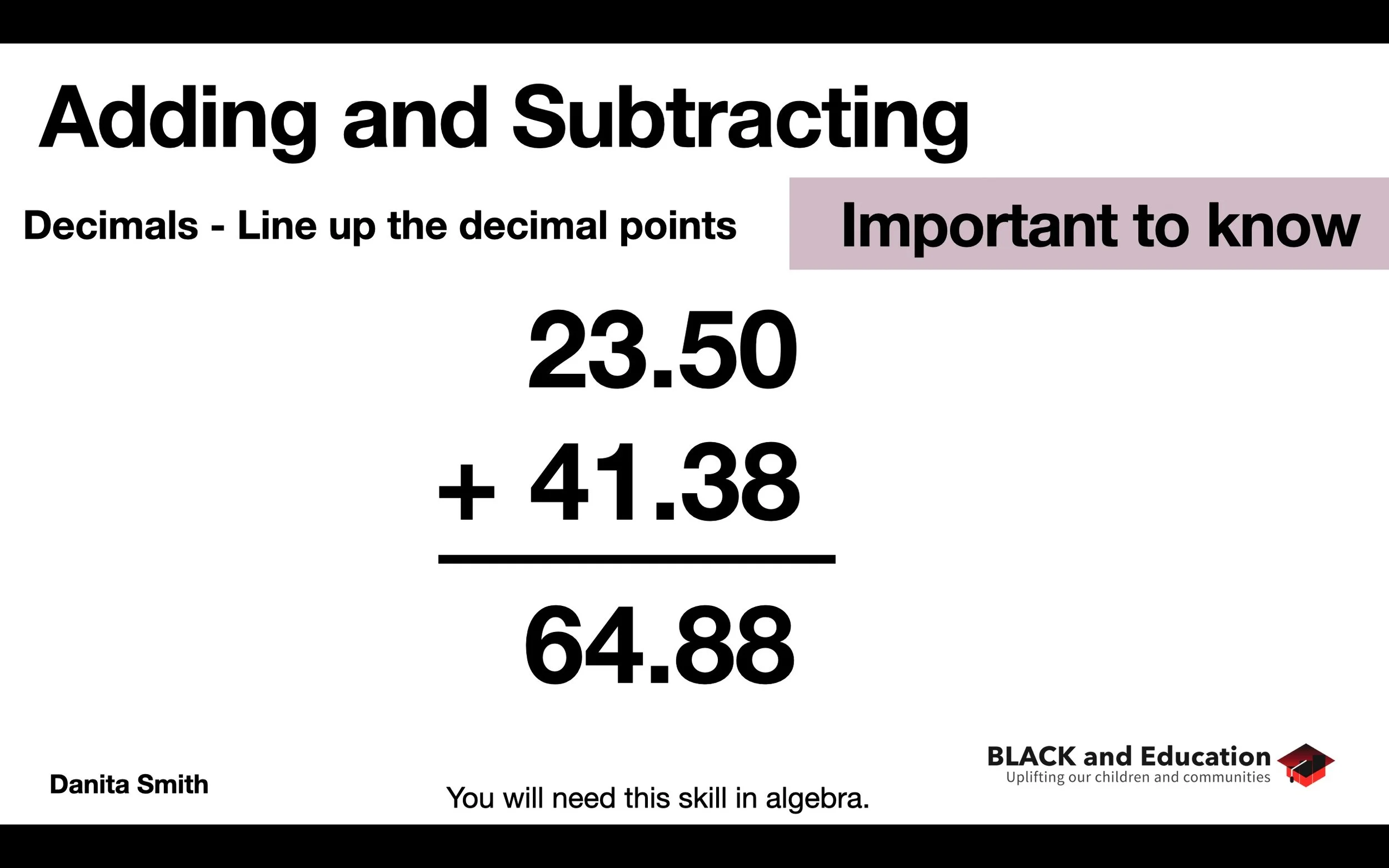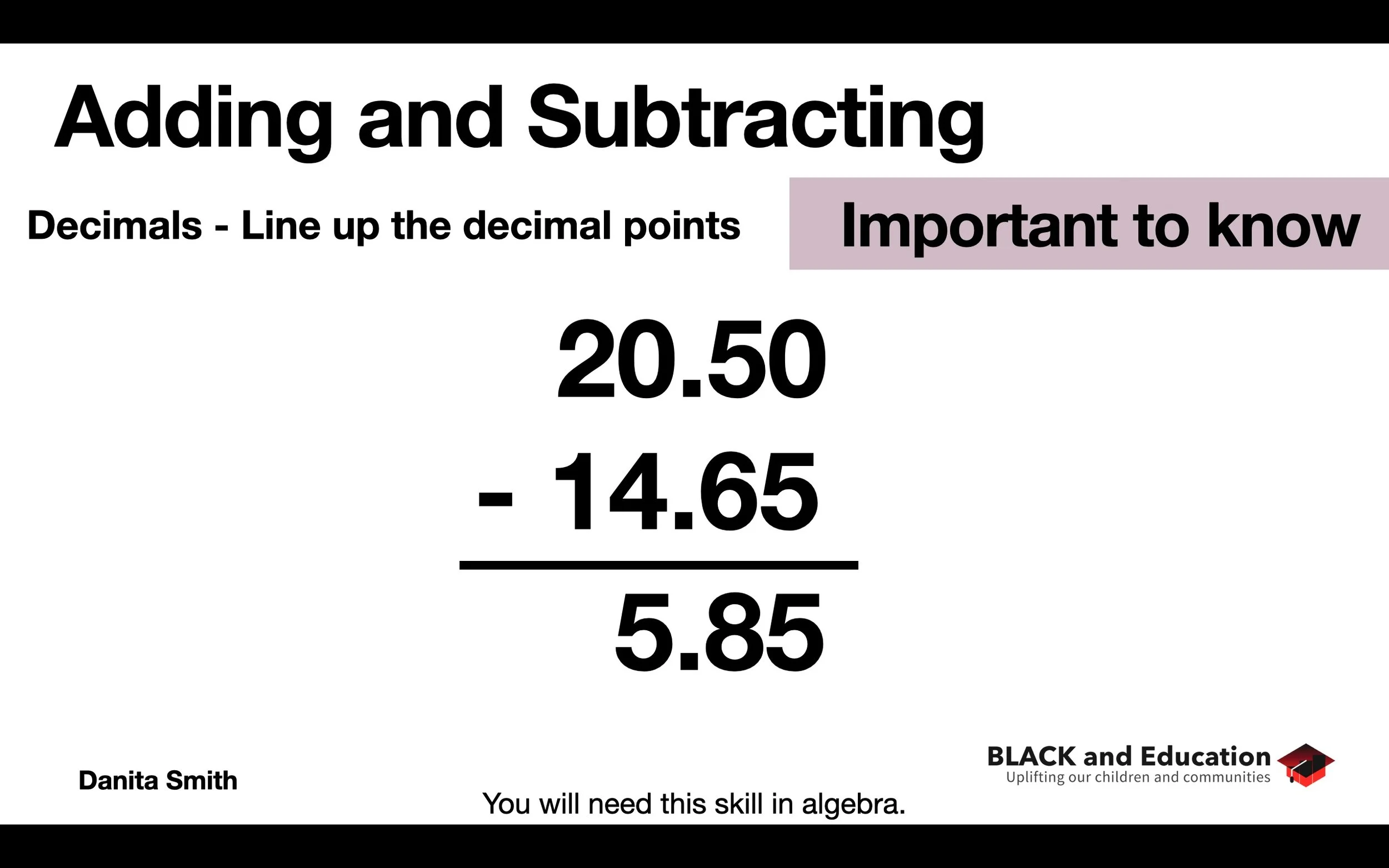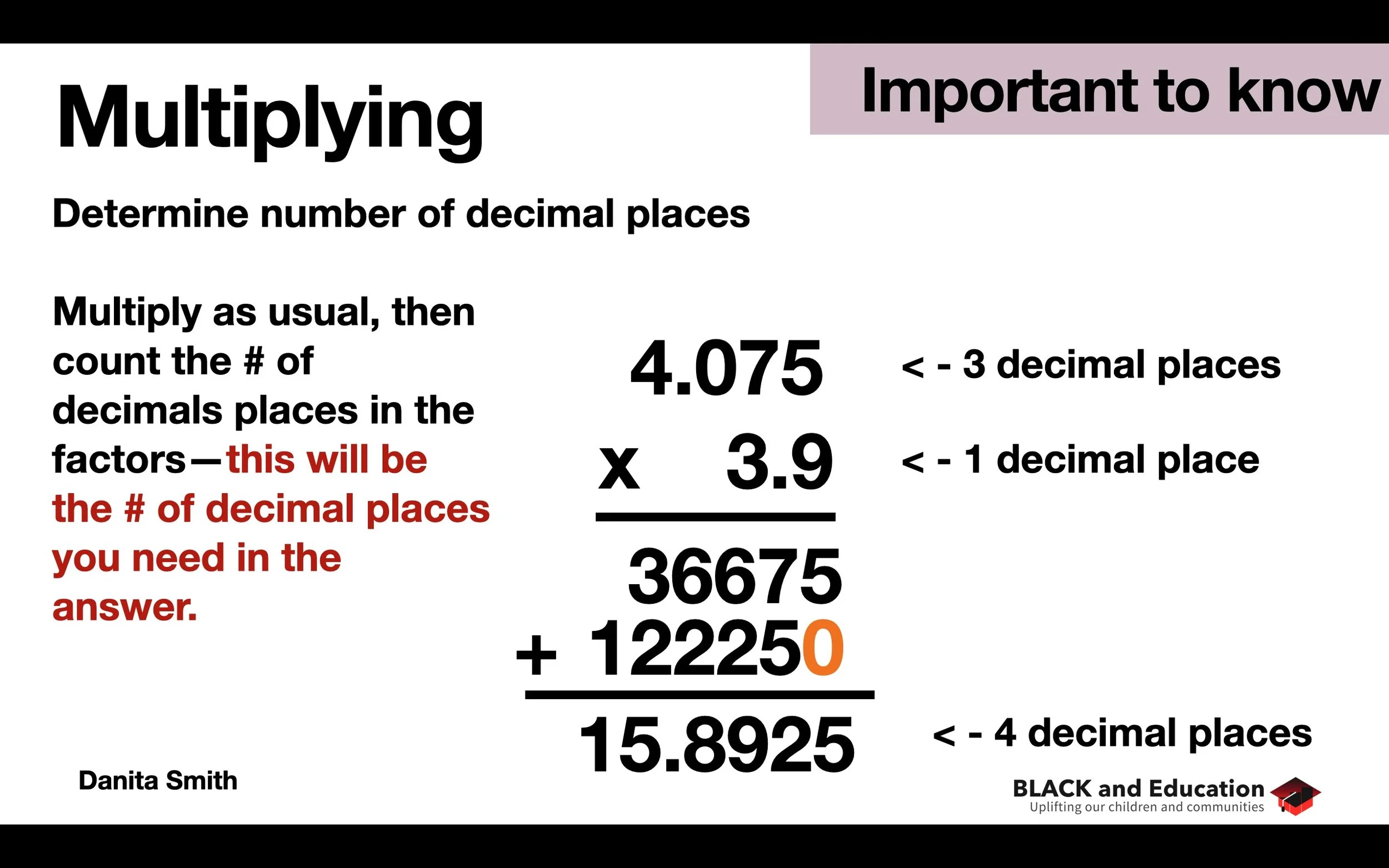Decimals: Adding, Subtracting, Multiplying and Dividing
Being able to manipulate decimals is a fundamental skill you should have. Here we will review the four basic operations, as they relate to decimals.
Addition and Subtraction
Adding decimals is similar to adding integers - all you have to do is make sure the decimals are aligned.
Take, for instance, money—$23.50 + $41.38, you will want to make sure that the hundredths place (cents) and the tenths place (10 cents place) are lined up properly. The two numbers behind the decimal place (to the right) represent $0.50 cents and $0.38 cents. It doesn't matter if we are talking about formulas for chemical mixtures or calculating average basketball points scored overtime a period of time—you will still want to make sure the decimal places are lined up properly and then add as usual.
So, the tens place should be lined up with the tens place, the ones place should be lined up with the ones place, the tenths place should be lined up with the tenths place and the hundredths place lined up with the hundredths place, etc.
The same thing is true for subtraction. You must line up the place values (and decimal point) to correctly subtract a decimal problem.
If there is no decimal in one of the numbers, simply use zero as appropriate:
20.00
- 9.89
10.11
So, subtraction and addition are approached in the same way, just line up the decimals and add or subtract as usual, but what about multiplication?
Multiplication
Multiplying decimals requires you to count how many decimal places are in each number.
In the problem above, we simply need to count how many spaces are after the decimal point in 4.075 and how many are after the decimal point in 3.9. There are 3 spaces after the decimal point in 4.075 and 1 space after the decimal point in 3.9 (we add up the spaces, 3 + 1, and get 4 spaces that should be in our answer).
Once we know how many spaces, in total, are behind the numbers being multiplied together, we include that many spaces after the decimal point in the answer—in this case we have 4 spaces after the decimal place in the answer 15.8925.
Division
When you divide using two decimals, you make the divisor (the second number) a whole number by moving the decimal point—what you do to the divisor, you have to do the dividend (you have to move the decimal point by the same amount of spaces).
In the above example, we have 25.65 divided by 0.06. We have to move the decimal point in 0.06, two spaces to the right to make it a whole number and, when we do that, we must also move the decimal point in 25.65, two spaces to the right. So, we end up with 2565 divided by 6.
We make sure that the decimal point is aligned, in the answer, with the decimal point in the dividend, and then we divide as usual. We get 427.5 as the answer…. 25.65 divided by 0.06 = 427.5
If we divide a decimal by a number that’s already a whole number, then we just divide as usual, making sure that we align the decimal point in the answer with the decimal point in the dividend.
Also, note that if the dividend or divisor is negative, we simply follow the rules for dividing or multiplying with negative numbers. SEE ARTICLE HERE





